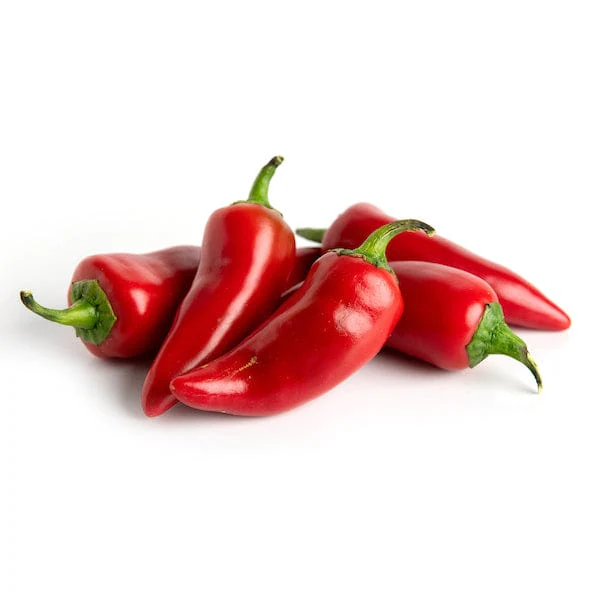
Pepper, the spice, comes from the berries of a plant that is a woody climbing vine. In the botanical world, pepper belongs to a genus of plants called Piper. This genus was created in 1753 by Carl Linnaeus, the Swedish botanist whose system for classifying plants is still in use today. He placed seventeen species in the piper genus and probably used the ancient Greek name for black pepper, Peperi, as the basis for the group.
Pepper isn't a fast-maturing plant. It takes several years for the branching woody vines to mature, and during their growth the vines can reach up to thirty feet. The pepper berries - which grow in clusters and dangle from the vines-are picked by hand when they are ready for harvesting, which usually begins two or three years after the vine is first planted. Black pepper is picked when the berries are still green, while white pepper is picked later, when the berries have turned from green to red. Preparing the berries for sale involves a lengthy process of drying, cleaning and sorting. Once the berries have been dried, they are then referred to as peppercorns, and these are what are used in food preparation around the world.
The pepper plant loves the warm, humid, rainy tropics, in a narrow band around the equator. Pepper also requires well-drained soils, and its preferred habitat is forests. Unshaded plants which are exposed too long to the sun will not yield many berries. The colourful mixes of whole peppercorns seen in many markets today contain green and black peppercorns. Although there are pink peppercorns, the ripest berries, these are more fragile and are therefore more costly than other kinds. This is why there are few of them in a peppercorn mix.
No one knows when the first human bit into a peppercorn and decided it would taste good on a piece of meat or in a vegetable stew, but in the West it was the ancient Romans who apparently first made pepper an essential part of their meals. Food was only part of the reason for pepper's popularity; health played an equally important role. In the Roman Empire, pepper was employed to relieve the pain that was a common consequence of numerous medical conditions and complaints. If you showed signs of a fever, it was common practice to be given a liquid that had some pepper in it.
The Romans were not the first to embrace pepper as a medicine. Belief in the spice's considerable usefulness is reflected in India's ancient Ayurvedic system of medicine, which is more than three thousand years old. In Sanskrit (a language of ancient India), black pepper is known as maricha or marica, meaning an ability to get rid of poison, which suggests it was used in patients for this purpose. Pepper was also believed by the Indians to have other qualities as well. For example, physicians would frequently apply pepper-based lotions to reduce the effects of decay in teeth, which made it an extremely popular remedy.
In the Middle Ages (5th-15th centuries) black pepper's renown made it a must-have item for the European wealthy, who loved the spice. At that time, pepper was guarded by servants in royal households and kept in the private wardrobes of the rich. It was considered a privilege to cook with pepper and many of the recipes from the period called for substantial quantities of pepper, which might be considered very unappetising today. But for most people, pepper was too expensive. In the year 1439, a pound of pepper was roughly equal to more than two days' pay in England. Meanwhile, pepper could be exchanged for gold, and also became a form of payment for peoples' work. In some of the larger cities, it was even possible to use pepper as rent in some kinds of accommodation. Employees in the pepper industry were not allowed to have pockets in their jackets or trousers so that this valuable commodity would not be stolen.
The huge demand for pepper and the money it could bring encouraged people to risk adventure on foreign oceans and in foreign lands, and it is within this context that the story of pepper really begins.